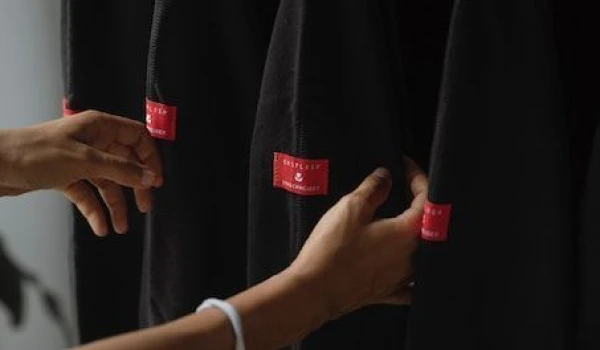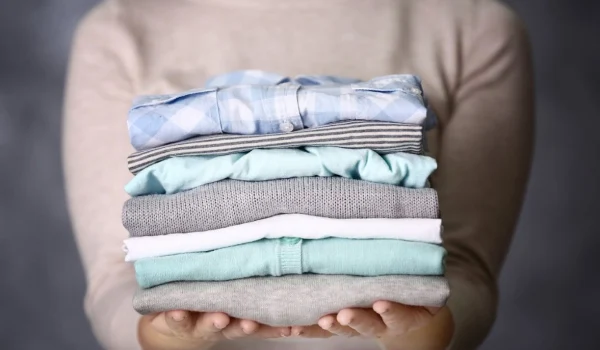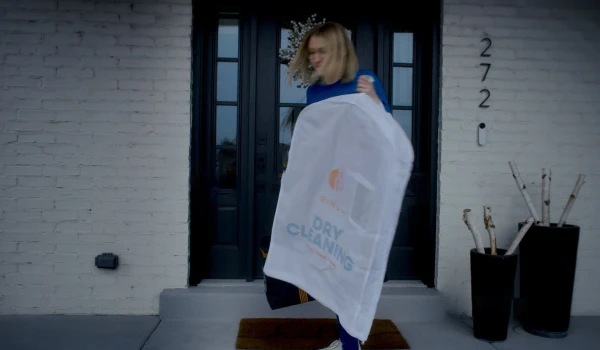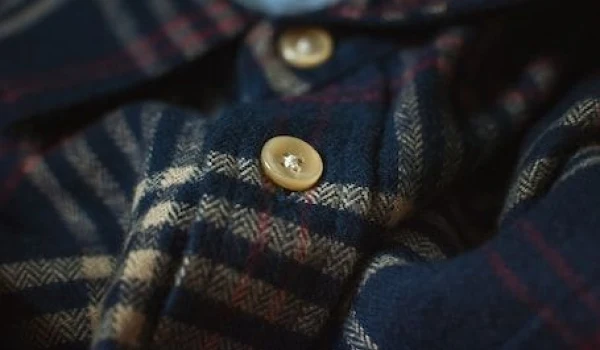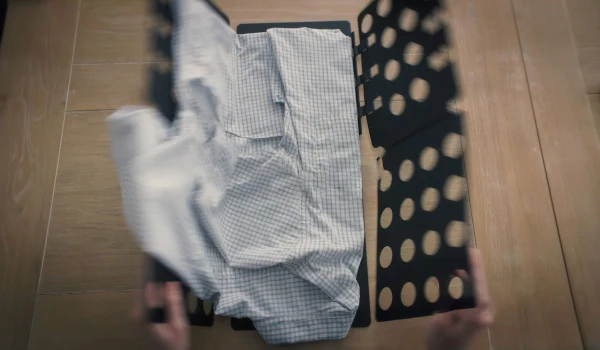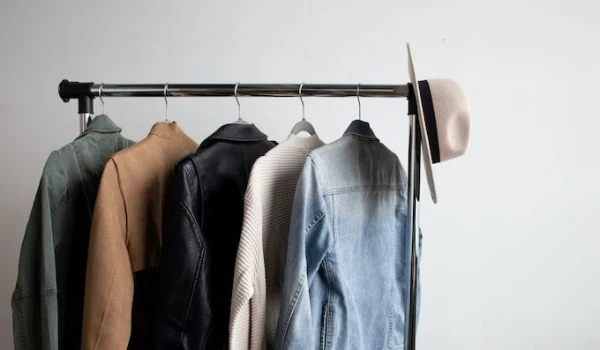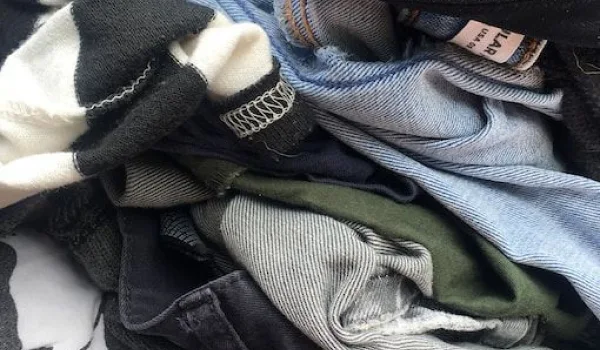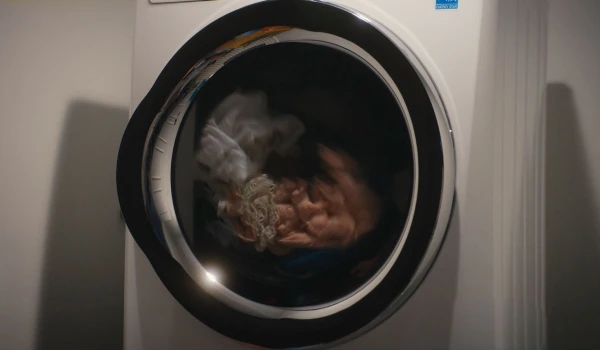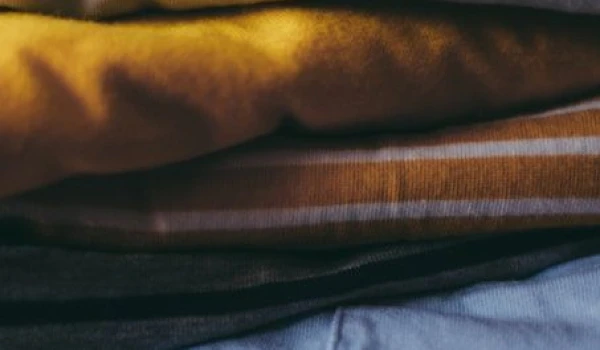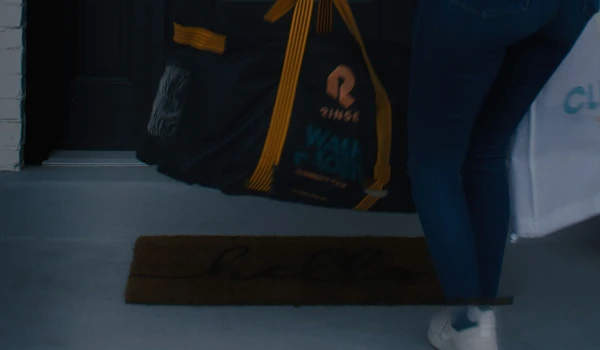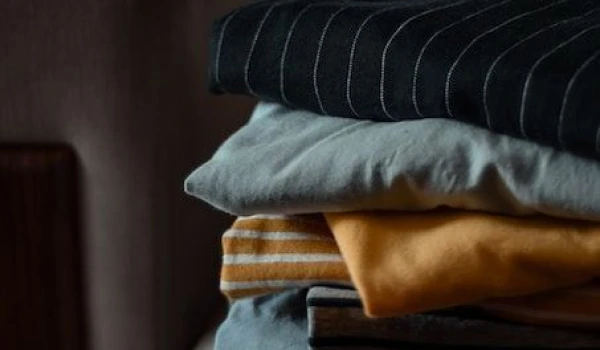Care
Clothing care tips to make your wardrobe last

This comprehensive guide provides valuable insights into effective couch-cleaning techniques. It begins by highlighting the importance of understanding couch care tags and proceeds to delineate cleaning methods based on various fabric types, such as cloth, microfiber, suede, velvet, and leather couches. Additionally, it covers specific instructions for cleaning couch cushions and eliminating odors from couch fabric.
Introduction
Couch potato. Couch surfing. Terms like this have originated because the couch is one of the most comfortable pieces of furniture in any house. Whether it's watching your favorite movie or getting cozy with a book after a long day, the couch is most people's go-to spot for lounging.
As comfy as it is, lounging on the sofa means that it is also prone to getting dirty. Our couches are constantly exposed to stains from food crumbs to pet hair.
We have good news, though. Most of these stains can be cleaned. You just need to know how. In this guide, we'll walk you through the steps of cleaning a couch.
How to Read a Couch's Care Tag
The care tag of a couch tells you everything you need to know about cleaning it. Can you use water on it or not? Is it okay to vacuum the fabric? Should you use a dry cleaner detergent or a mild detergent? Answers to all these questions are on the care tag.
Here are some common couch care symbols you can expect to see on the tag:
-
W: W means that you can use water to clean the couch. Couches with these tags are the easiest to clean.
-
S: You'll need to use a solvent-based cleaner for couches with an S.
-
WS: You can use both solvent-based cleaners or water on couches with this tag.
-
X: Such couches should be vacuumed only. They cannot be cleaned with any type of liquid or solvent.

Clean Your Sofa According to Fabric
Couch cleaning is an integral part of your cleanup routine, whether it's for your home, Airbnb, or even a hotel. How you clean a fabric couch differs from the cleaning method for a leather couch or a microfiber couch.
Therefore, you should know what type of fabric your couch has before you start cleaning it. Here are the cleaning methods for each couch fabric type:
Cloth Couch
It's easy to clean a cloth couch since most of them are safe for water.
Step 1: Brush It
Start by brushing the couch with a stiff brush or a towel to remove loose dirt or dust. If your couch has dust mites, this step will also help get rid of them.
If you're using a towel, make sure it's white. A colored towel could transfer its color onto the couch.
Step 2: Sprinkle Baking Soda
Sprinkle baking soda on the sofa. Let it sit for an hour. Then, use the brush attachment on your vacuum to remove the baking soda.
Step 3: Create a Cleaning Solution
Add a teaspoon of dishwashing liquid and a tablespoon of white vinegar to a cup of warm water. Put this solution in a spray bottle.
You may mix a teaspoon of baking soda with this solution. However, if you plan to do this, do it on a sink. Baking soda reacts with vinegar, creating a bubbly mess.
Step 4: Spot Clean
Spray the stains with this solution, and use a white cloth to blot them. Don't rub; that will only make the stains worse.
Step 5: Let Dry
Do not use a hairdryer or put the couch in direct sunlight, as this could cause shrinkage and fading. Let the couch dry naturally. Don't sit on it until it has dried.

Microfiber Couch
Microfiber couches are a bit trickier to clean since water can leave marks on them. Follow these steps to clean your microfiber couch.
Step 1: Use Rubbing Alcohol
Fill a spray bottle with rubbing alcohol and mist it on the couch. Do one section at once. Scrub the sprayed area with a soft sponge.
Step 2: Brush the Couch
Since alcohol evaporates rapidly, your couch will dry quickly. Once the couch is dry, use a soft-bristled brush to bring back its fluffiness.
Step 3: Use Distilled Water
If you still see any stains, follow the same process, but use distilled water instead of rubbing alcohol. Let the couch dry naturally.
Step 4: Spot Clean Stains
If you have pet stains on your microfiber couch, use an enzyme-based cleaning solvent to spot clean them. Follow the instructions on the product carefully.
Alternatively, put a quarter of a teaspoon of dish soap in a cup of water. Mix to create a solution. Apply this stain remover on a clean cloth and blot the stain gently.

Suede Couch
You've got a West Elm or Crate & Barrel suede couch. It's a statement piece but a pain to clean. Here's how to do it.
Step 1: Vacuum Loose Debris
Ideally, you should vacuum the couch once a week to remove any dirt or debris. Use an upholstery brush for it. The crevice tool will help you get into the nooks of your couch.
Step 2: Treat the Stains
The method you use for stain removal will depend on the kind of stain. White vinegar is a good option for most stains. Add a few drops of white vinegar to water and dip a sponge or cloth into it. Use it to clean the stain.
Use cornstarch for oil-based stains. Sprinkle cornstarch on the stain and leave it for 15 minutes. Then, use a dry cloth to wipe away the cornstarch and the stain with it.
Another option is baking soda and water paste. Apply the paste to the stain and dab it in with a sponge. Dry the section with a clean cloth.
Step 3: Let It Dry
After treating the stains, let your suede couch dry completely.
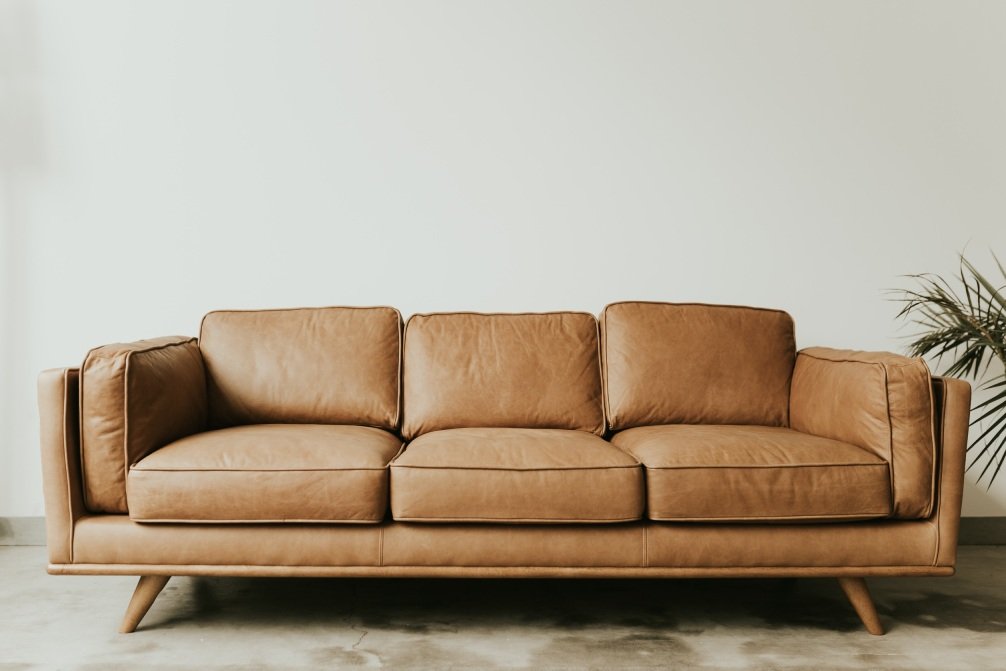
Velvet Couch
Velvet is relatively high-maintenance. However, that doesn't mean you need any special equipment to clean it – all you need is a bit of care.
Step 1: Use Paper Towels
Soak up wet stains with paper towels. Wipe the stain gently, but avoid rubbing it, as that will only spread the stain more.
Mix some drops of dish soap in water and blot the stain with this solution using a clean cloth.
Step 2: Use a Steam Cleaner
For wrinkles, use a steam cleaner. It'll also remove any leftover stains. Don't work the steam cleaner at a high-temperature setting, though.
Step 3: Use a Dry Brush
Finally, use a dry brush to give your velvet sofa that brand-new look.
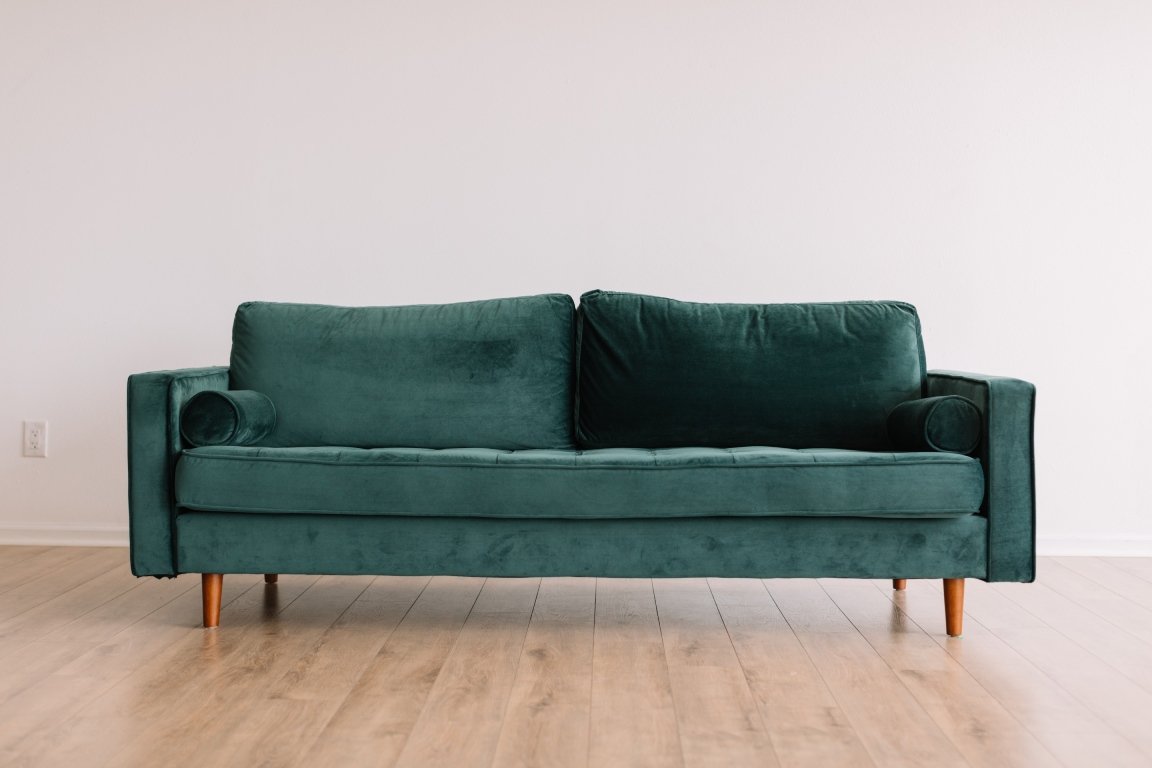
Leather Couch
Leather couches are usually easy to clean. Here's how:
Step 1: Wipe the Couch
Wipe the leather with a microfiber cloth to remove the dirt or food crumbs.
Step 2: Vacuum
Since leather couches are prone to collecting dust, use a vacuum cleaner with a soft brush attachment to get rid of dust particles on the surface.
Step 3: Use a Leather Cleaner
Use a commercial leather cleaner to remove tough stains or spills. Alternatively, make a mild soap solution.
Rinse the leather sofa with a damp cloth. Then, dry it immediately with another clean cloth.
Step 4: Apply a Protectant
Apply a store-bought leather protectant or conditioner to keep your couch looking shiny and new.
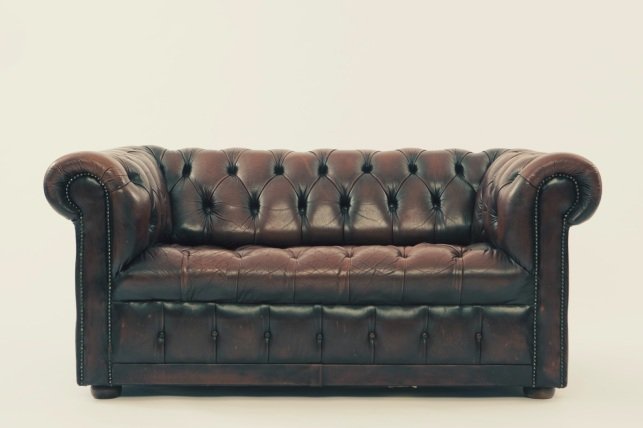
How to Clean Couch Cushions
If your couch cushions are removable, you can simply remove them. Clean each couch cushion individually.
For instance, a solvent-based cleaner can be used as a spot cleaner. Do a spot test beforehand to ensure the fabric doesn't get damaged. Again, it's best to check the care tag on your couch and use an appropriate cleaning solution for the fabric. If you're unsure, use a dish soap and water mixture instead.
You can also vacuum the cushions or use a lint roller to remove pet hair.
For More Laundry Tips and Care, Rinse
Cleaning your couch can take quite a lot of time and effort. If you've planned to do it this week, it's best to outsource one of your other household tasks. Why not make it laundry?
At Rinse, we're happy to wash your clothes while you get your upholstery clean. We can do both: dry clean and machine wash.
Got any delicate pieces (looking at those Restoration Hardware ones)? We can clean everything from sheets and shams to pillowcases with the right detergents and drying methods.
Simply let us know, and we'll pick up the clothes from your doorstep. Then, we wash, dry, fold, and deliver them back to you. It's that simple!
Contact us at Rinse today to see our skill in action.

This comprehensive guide unveils effective techniques for cleaning suede shoes, addressing common concerns, and providing step-by-step instructions for proper care. Additionally, it includes a section dedicated to answering frequently asked questions about suede shoe care.
Introduction
Suede shoes are a sight to behold, especially for a formal event. They're classy. They're chic. But unfortunately, they're also extremely delicate and require special care when it comes to cleaning.
Ideally, you'd only wear your expensive suede shoes on special occasions to avoid getting them dirty. However, life happens, and your shoes can get soiled.
That's no reason to panic, though. In this guide, we'll discuss a detailed method to clean suede. We also answer some frequently asked questions about cleaning a suede shoe.
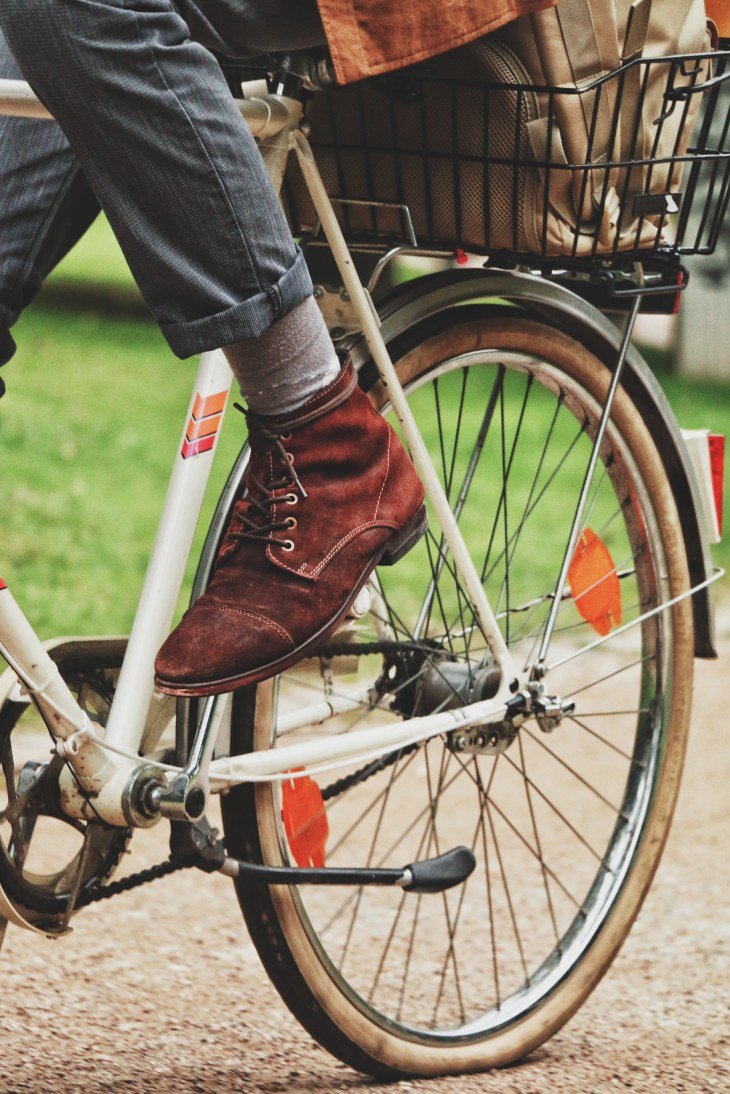
How to Clean Suede Shoes: 6 Steps
So, you've got a dirty suede shoe, and you want to bring it back to its former glory. We got you. Follow these steps to accomplish the task.
Step 1: Gather Your Supplies
Cleaning suede shoes isn't as easy as plopping them in a sink full of dish soap and water, just as you would with a sneaker. Instead, you'll need specialized supplies. These include:
-
Suede eraser / suede cleaner
-
Suede brush
-
White vinegar
-
Soft bristle brush or a microfiber towel
-
Suede protector spray
Step 2: Dry Your Shoes
Do not make the mistake of cleaning your suede shoe when it is wet. It will only set the stain further in, making it more challenging to be removed. Let the shoe dry before you start the cleaning process.
If your shoes are wet, use a clean cloth or paper towels to blot their excess moisture. Don't use a blow dryer or any heat source of that sort, as it will damage your suede. Also, don't keep the shoes out in the sun for quick drying.
Step 3: Remove the Loose Particles
Use a suede brush to remove loose debris accumulated on your shoes. Brush gently in a circular motion and then brush back and forth to get rid of all the particles.
If the suede brush is unable to reach into small areas, you can use a toothbrush instead. Follow the grain or pattern of the nap. If there's grime on your shoe, rub the spot back and forth with the brush.
Step 4: Remove the Stains
The suede eraser will help remove stain particles from your shoes. Again, rub the eraser back and forth over the stains. However, if the stain doesn't seem to be budging at all, don't go harsh on the material. Instead, opt for a different stain removal method.
For example, you can use an emery board nail file to gently scrape off any stubborn stains. Work with light pressure only; you don't want to scratch the suede.
Step 5: Use White Vinegar
When you encounter a tough stain, it's time to bring the big guns out. White vinegar. Take a microfiber cloth and dip it in white vinegar. Then, use it to dampen the stained area. Make sure not to soak the whole shoe in vinegar.
Don't get scared if the shoe's color starts changing. That's just vinegar in action. As vinegar evaporates, the shoe's color will return to its original state.
Let your shoe air dry, and check if the stain is gone. If not, repeat the process until it's completely removed. Then, brush the shoe with a suede brush to restore the nap.
Step 6: Spray Suede Protector
High-quality suede shows are pre-treated for moisture resistance to keep every water stain at bay. But it's always a good idea to give your shoes an extra layer of protection.
Use a suede protector spray following the instructions on the bottle. Choose a well-ventilated area, then evenly coat the shoes from about six inches away. Let the spray dry before wearing your shoes again.
Pro Tip: Try not to wear your suede shoes in wet conditions. Even if you do find yourself in an unexpected downpour, stay away from the puddles and splashy areas.
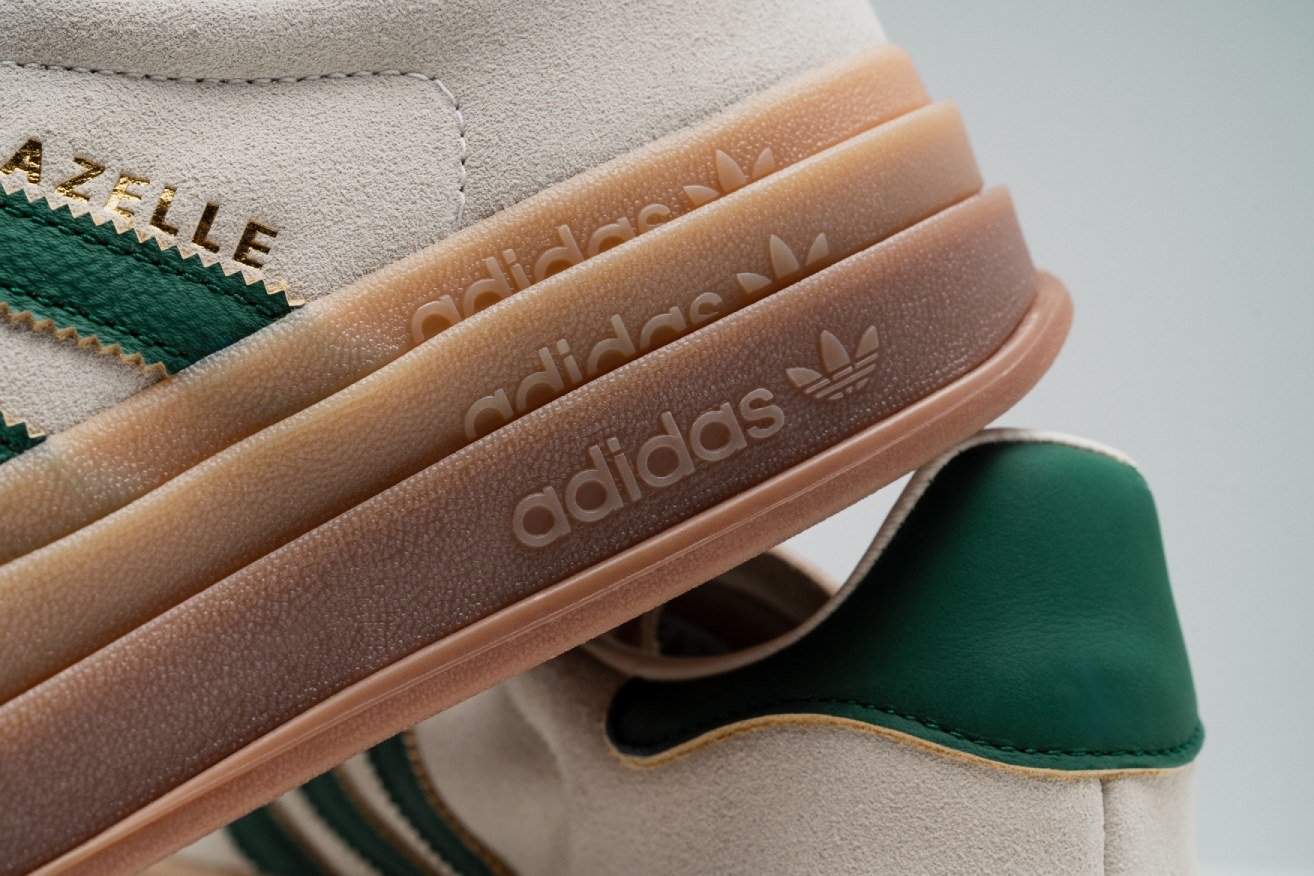
How to Remove Stains from Suede Shoes
There's always that one stubborn stain that gets on your favorite pair of shoes and refuses to budge. Below are some shoe care hacks to remove such stains from your suede pair.
Oil and Grease Stains
Is that a gasp of horror we hear? We know the dreadful feeling of dropping a greasy piece of food on your suede shoes. But there's a fix.
Apply a small amount of cornstarch, talcum powder, or even baking soda on the stain and let it sit for a few hours. The cornstarch will soak up the grease or oil. Then, you can use a suede brush to scrape the cornstarch from the shoe.
If the grease dries on your shoes, apply dish soap to the area. Let it sit for 10 minutes on the stain, and then blot it dry with a cloth.
Pro Tip: NEVER dip your suede shoes directly in water. A damp cloth is the most you should use on them.
Dirt Stains
Mud and dirt stains are the most common type of stains on shoes. You can use a suede brush to break the dirt apart and then gently rub it off with a suede eraser. If the mud particles are too stubborn, use a pencil eraser to scrape them off.
You can also steam the area lightly before using a paper towel to blot it. The steam helps loosen the dirt. Let your shoe air dry before you wear it again.
Water Stains
Interestingly, you can use water to remove a water stain on suede. Spritz a little water on the stain, and then use a paper towel to blot it. Let it air dry, and you should see an improvement in the stain. If that doesn't work, you can try using white vinegar or rubbing alcohol instead.
Salt Stains
Since most people wear their suede shoes in winter, it's common to get salt stains from walking on snowy sidewalks. Use the suede brush to remove the excess salt from your shoes. Then, blot the stains with a dish soap and water mixture. Repeat if needed and let it air dry.

Suede Shoes Cleaning FAQs
Can suede shoes go in the washing machine?
When it comes to washing shoes, you need to understand that not all materials are suitable for a machine wash. Suede shoes should NEVER be put in the washing machine. Stick to gentle hand washing methods instead.
Are suede shoes waterproof?
Suede is not a waterproof material. Excessive exposure to water can damage the texture and color of suede shoes. Some shoes have special finishes to make them water-resistant. It's still wise to avoid wearing them in wet conditions.
Are suede shoes durable?
Yes, suede shoes are pretty durable. Unlike leather, which is made from a thicker hide layer, suede shoes are made from the inner layer of a hide. That makes them more flexible than leather. If you take good care of your suede shoes, they'll last for years to come.
How can I fix a scratch on suede shoes?
A scratch or scuff mark on your suede shoe can make it look dull and worn out. For a smaller scratch, rubbing your finger gently over the mark can help fix it. For deeper scratches, you can use a suede conditioner. Brush the suede fibers with a brush to buff the scratch.
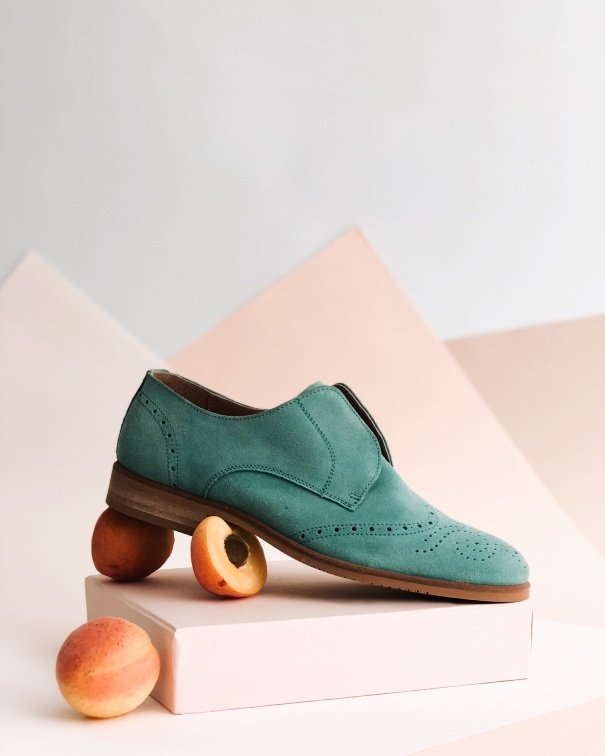
Let Rinse Take Care of the Rest
Just like suede, every once in a while, you come across a fabric that you're not sure how to clean. Maybe it's the silk dress your mom gifted you for your birthday, or the wool jacket passed on to you by your older brother. Either way, you don't want to ruin your prized possession by washing it wrong.
That's where Rinse's laundry services come to the rescue. At Rinse, we know how to wash delicate fabrics like suede, silk, cashmere, and more. We use gentle methods and specialized products for our clients' laundry.
Simply let us know which day we need to pick up your laundry, and we'll be there.
Contact us at Rinse today to see our skill in action.

This troubleshooting guide offers comprehensive insights into fixing common washing machine problems, prioritizing safety and easy-to-follow instructions for fixing a washer that doesn't spin, addressing loud washing machine concerns, resolving drainage issues, and handling leaks. It also advises readers on when it's appropriate to seek professional help.
Introduction
Sometimes, it so happens that your washing machine malfunctions or breaks down. It's the middle of the Christmas break or a weekend and you can't seem to find an appliance repair service. Or maybe you don't have the extra cash for a repairman. Now, you have a whole load of laundry, which includes the dress you planned to wear for the New Year's Eve party at your friend's place.
Whatever the reason may be, you should know a few wash machine repair tricks to see if you can troubleshoot and fix the problem. Is there something wrong with the drain hose? Does your washer stop during a particular spin cycle? Is the power cord chewed up by your dog? You know, the usual.
In this guide, you'll learn how to address common wash machine repair issues. We'll talk about drainage issues, leak handling, power problems, spinning malfunctioning, etc.
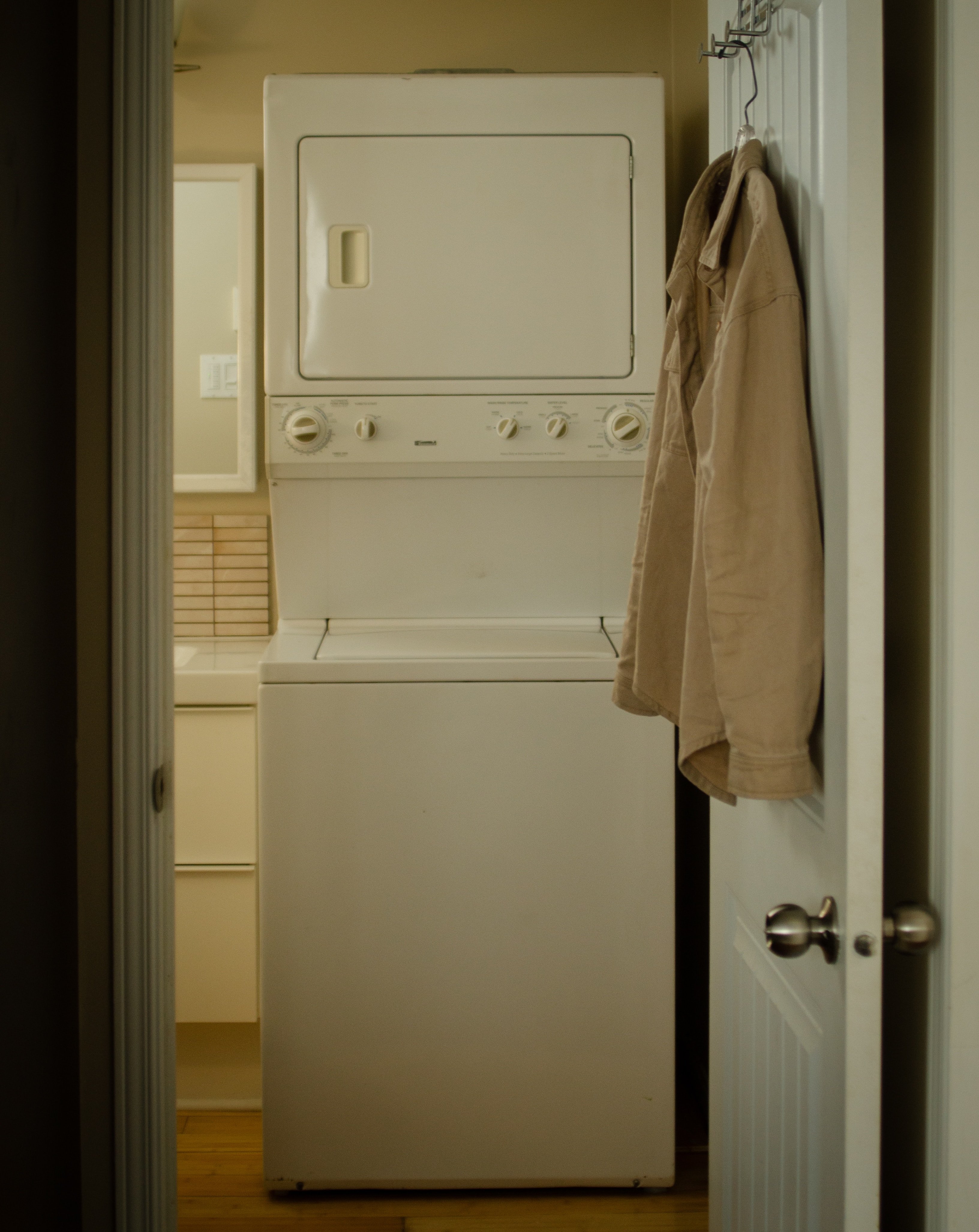
Safety First
Here's a quick reminder: you're not a trained and certified repairman. So, you'll need to be extra cautious during your washing machine repair adventure. Here are some tips:
Unplug the washing machine before you touch any of its internal parts. It doesn't matter if the repair is as minor as removing a sock stuck in the drain hose.
-
Get help. If it's something big, you might need an extra pair of hands.
-
Do not try to lift the washer alone. Washing machines are heavy. They can also tip over if you're not careful.
-
Wear protective gear like gloves and safety glasses. They will keep you from getting hurt during your washer repair since you might come in contact with dirty and sharp parts.
-
Add some prep to your repair. A picture of the washer's model info, the troubleshooting guide, or a YouTube video are some examples.
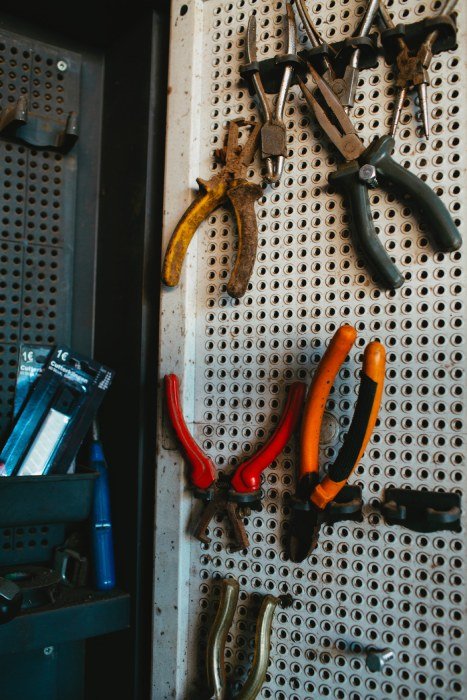
How to Fix a Washer That Doesn't Spin
You've selected a cycle, such as Eco Warm, but your washing machine refuses to spin. It's a common issue. Here are some ways to fix it.
Check If the Washer Is Level
Back in the day, we had washing machines that would, quite literally, move from their spot during spinning. However, modern washing machines are built with safety in mind.
One of these measures is the automatic shut-off feature. If your washer isn't level, it can trigger this feature and halt the spinning cycle.
Check if your washer is level on the ground. If it's not, fix it by adjusting the feet. Or, you can put a level platform under it.
Redistribute the Load
Sometimes, the washing machine's spin cycle stops because the clothes inside aren't balanced. For a front-load washer, open the door and rearrange the clothes inside. Then, close the lid.
As soon as you do it, spinning will continue. If not, try again.
Common loads that get ''unbalanced'' contain high-absorption garments. These may be thick winter clothes, jeans, towels, or bedsheets. Try taking some of these items out and re-running the spin cycle.
Check the Drain Hose
Some items, like coins or hairpins, can clog the drain hose. Look for the drain hose that goes from the backside of the washer to the pipe. Remove it and inspect for any blockages.
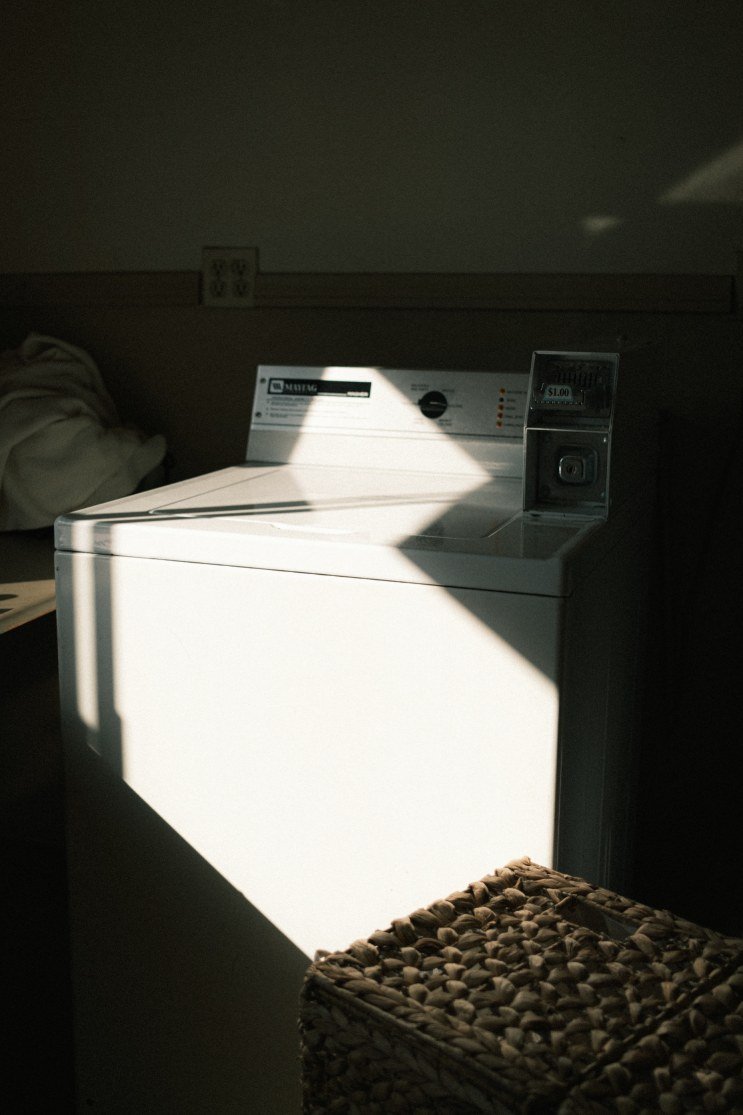
How to Fix a Loud Washing Machine
Sure, washing machines make a noise when operational. But does yours seem to be louder than thunder? If you hear unusual and loud noises coming from your washing machine, it's time to investigate.
Empty Your Pockets
For most washers, when the lid locks in place (as the cycle starts), you hear a clicking sound. That's perfectly normal.
But what if you hear metal clicking and hitting against the inside of the tub? It's probably something you forgot in your pockets, like coins (or keys?!).
Lubricate the Tub Bearings
The tub bearings are present below the washer's tub. When they get old and worn out, they start making a lot of noise. You can lubricate them with grease to make the noises go away.
Check the instructions on your washer's manual to see which type of grease you should use. Silicone grease and turbine oil are standard options.
Alternatively, replace the tub bearings.
Replace the Motor Drive Belt
The motor drive belt could be worn out, leading to loud noises. Often, you'll also smell burning rubber. That's an indication to replace the belt.
However, this is a significant repair. You'll have to take some sections of your washer apart. If you plan to do it yourself, keep your user manual in front of you.
If the pulley belt on the motor is frayed or broken, replace it. Or, if it has moved out of place, fix its position.
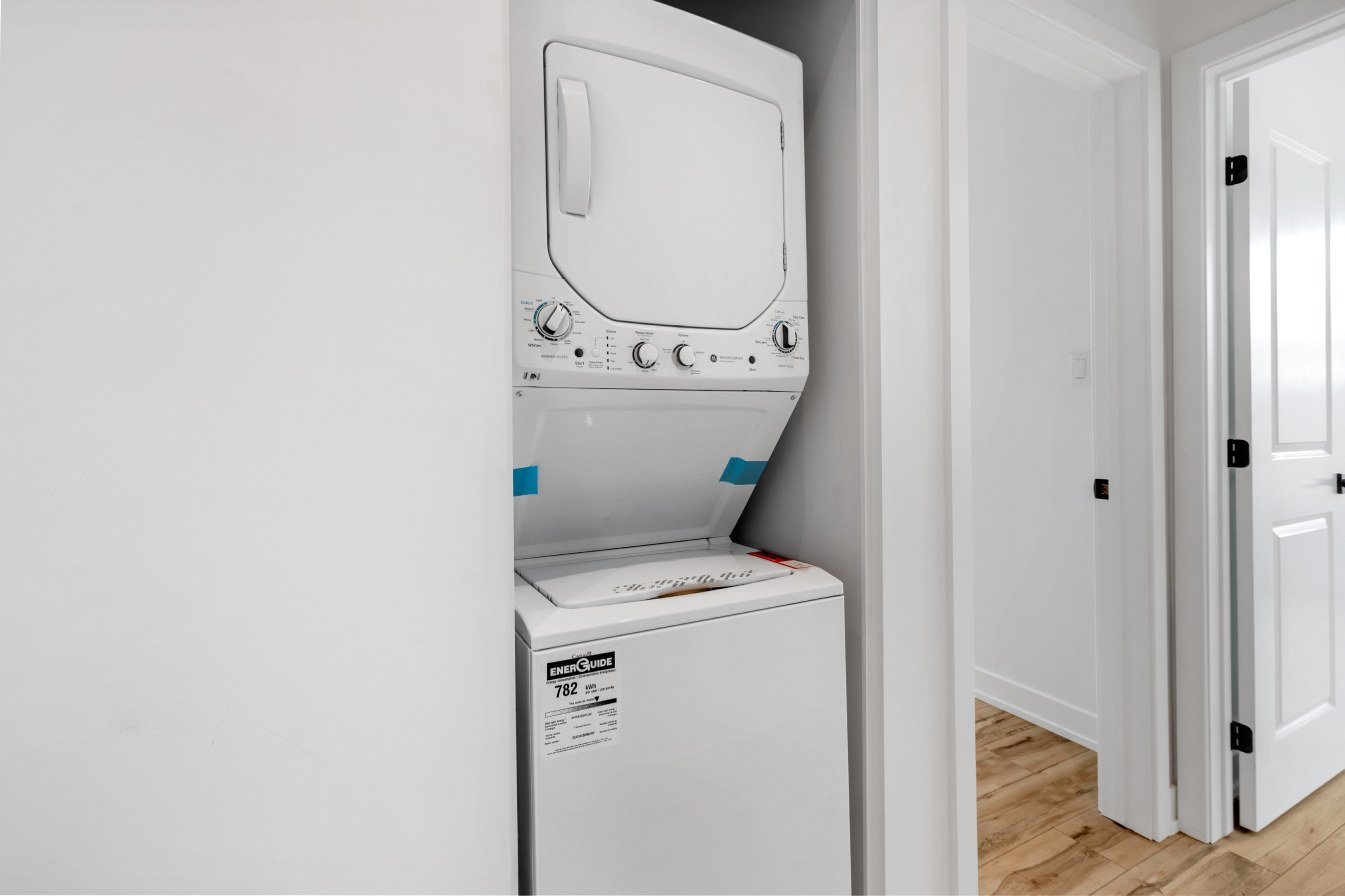
How to Fix a Washer That Won't Drain
The whole cycle runs. You open your front or top load washer only to find that the tub is still filled with water. What could be wrong? Here are some possible issues.
Check the Drain Hose
Is there a clog or kink in the drain hose? Check if the hose is crushed or kinked. If yes, fix its position. If there's a clog, remove it.
Check the Drain Pump Tube
Sometimes, the clog isn't in the hose but in the tube that takes the hose to the drain pump. Keep a bucket under the pump before you open the tube, as it contains water.
Unclamp the tube and remove it. Look for any clogs and remove them. If there is one, it will most likely be at the end. Take it out using pliers or with your hand — just make sure the washer is unplugged.
Check the Drain Hose's Height
Your washer's user manual will have a drain pipe height requirement. If the hose is placed lower than this height, the water won't drain. For instance, in Maytag washers, the maximum height for the drain pipe is 96", while the minimum is 39''. If the height seems to be the issue, adjust it properly.
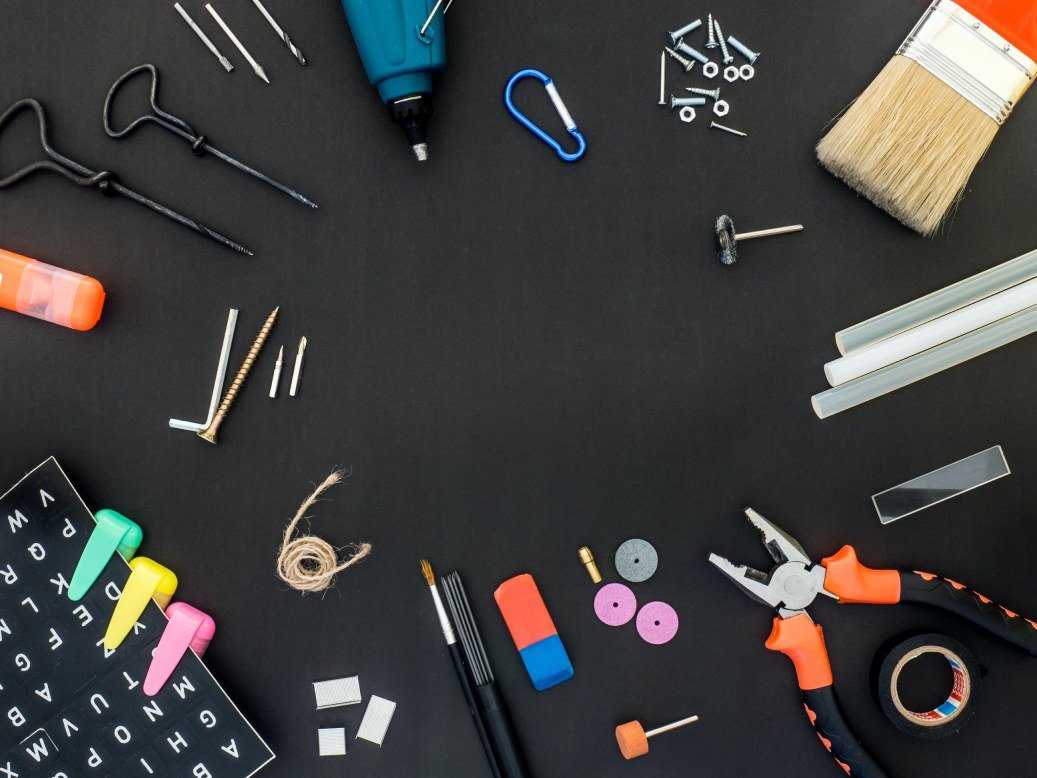
How to Deal with a Leaking Washing Machine
Is there a pool of water under your washer? Something is leaking. Here's how to fix it.
Inspect the Door
If you have a front load washer, the likely cause of leakage is a torn or worn-out door gasket. It's the gray seal between the tub and the door. Look for any cuts or damage to the gasket. If you see any, it needs to be replaced.
Sometimes, the problem is the overuse of detergent. If you see a lot of soap bubbles on the door of your front load washer, reduce the amount of detergent you use. Also, clean the washing machine while you're at it.
Check the Hoses
Check the drain and fill the hose. If they're not tightly secured, water can leak out. Make sure they're properly connected and clamped into place.
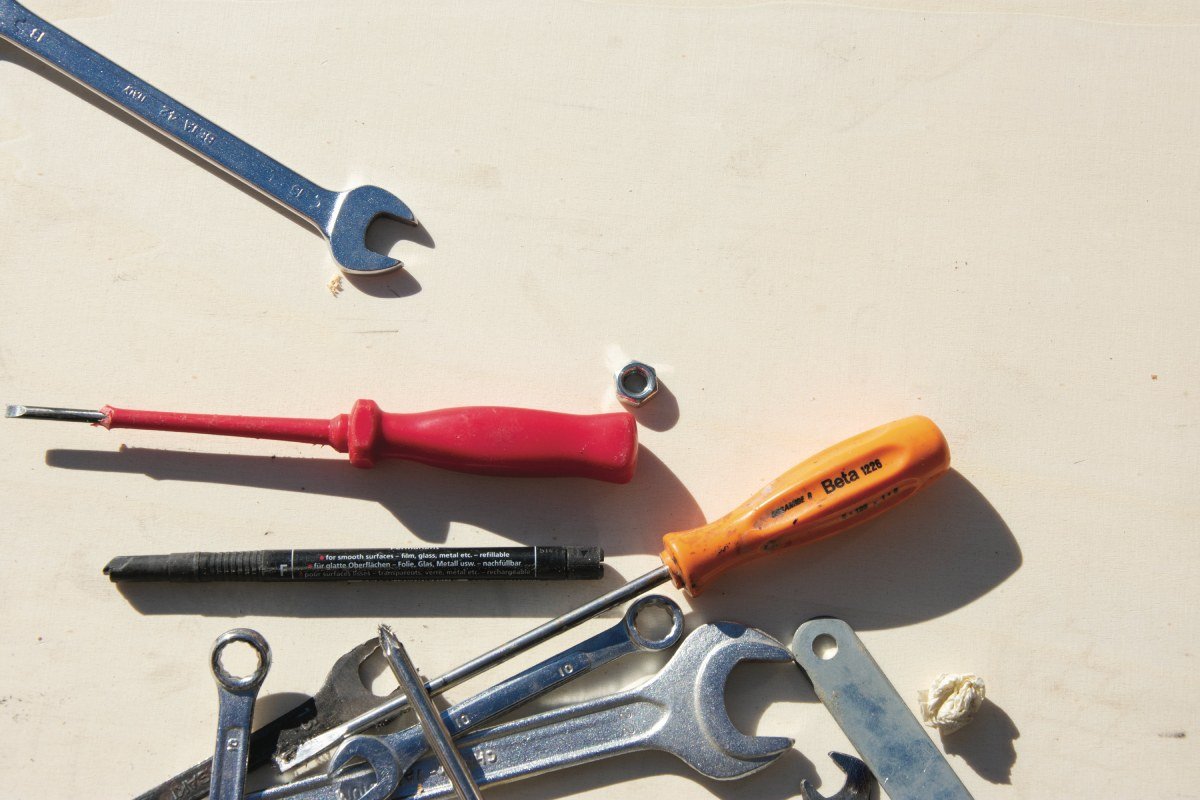
When to Call a Professional
Sometimes, you need to call a washer repair professional; you can't solve every issue. For example, if the tub of your washing machine is cracked, it will leak water. Also, a hole in the drain hose or pump can result in leakage. These problems often require professional attention.
You should also call a professional for part replacement. For most replacements, you have to unassemble your washer. It can be risky if you're unfamiliar with the machine's inner workings. Some replacements may also require specialized tools or knowledge that you don't have. An expert won't have these issues.
No Working Washing Machine? No Problem
Your washing machine won't agitate. Or there's something wrong with the water inlet valve. Maybe the drain line has to be cleaned. What should you do with the laundry pile while a professional is working on your washing machine repair?
Should you hand-wash it? That's too much work.
Easy solution: send your laundry to us at Rinse. We have unmatched expertise in washing clothes, regardless of the fabric requirements. When your washing machine breaks down, simply send us a text or book a pick-up from our app.
We'll be at your doorstep to pick up your laundry. After washing, drying, and folding your laundry, we'll drop it at your home. As a result, you can rest easy knowing that your clothes will be spotless even if your washing machine gives you a hard time. If you need dry cleaning services, we provide them for your special occasion clothing, too.
Contact us at Rinse today to see our skill in action.

How To Fold Bath Towels For Display
Achieving a neat and uniform fold for bath towels is essential for maintaining a polished look. Here are a few step-by-step instructions to help you achieve that perfect fold.
Smooth and Flat Surface
-
Lay the Towel Flat: Start by placing the towel on a smooth, flat surface. Ensure there are no wrinkles or creases.
-
Smooth Out: Smooth out any wrinkles or folds to create a clean slate for folding.
Fold in Thirds
-
Fold One Third: Take one side of the towel and fold it in towards the center, covering about one-third of the towel's width.
-
Fold the Other Third: Repeat the same fold with the other side, ensuring the edges align neatly.
-
Finish with a Half Fold: Fold the towel in half lengthwise to create a compact, uniform appearance.
For hand towels, the folding process is slightly different due to their smaller size.
Begin with a Compact Surface
-
Lay the Towel Flat: Place the hand towel on a flat surface, smoothing out any wrinkles.
-
Fold in Half Widthwise: Fold the towel in half widthwise, creating a more compact base.
Widthwise Fold
-
Fold in Thirds: Take one side and fold it into the center, covering about one-third of the towel's width.
-
Finish the Fold: Repeat with the other side, aligning the edges for a neat finish.
Techniques for Hotel Displays
Hotels often use various towel folding techniques to achieve a polished and professional look. Here are a few popular methods:
Classic Tri-Fold
-
Lay the Towel Flat: Start with the towel laid flat on a surface.
-
Fold in Thirds Lengthwise: Fold the towel in thirds lengthwise, ensuring the edges are aligned.
-
Finish with a Widthwise Fold: Fold the towel in half widthwise, creating a compact, elegant fold.
Accordion Fold with Decorative Edge
-
Lay the Towel Flat: Smooth out any wrinkles on a flat surface.
-
Create an Accordion Fold: Starting at one end, fold the towel back and forth in small, even sections to create an accordion effect.
-
Add a Decorative Edge: Fold the accordion in half and place it on display with the decorative edge facing out.
Roll-Up Technique
-
Lay the Towel Flat: Smooth out any wrinkles.
-
Fold in Thirds Lengthwise: Fold the towel in thirds lengthwise.
-
Roll from One End: Starting at one end, roll the towel tightly to create a neat, cylindrical shape.
Towel Folding for Spa Displays: Techniques
Spas require a more tranquil and inviting towel presentation. Here are a few techniques tailored to the serene ambiance of a spa setting:
Zen-Inspired Roll
-
Lay the Towel Flat: Smooth out any wrinkles on a flat surface.
-
Fold in Half Lengthwise: Fold the towel in half lengthwise.
-
Roll Tightly: Starting at one end, roll the towel tightly to create a compact, neat roll.
Lotus Flower Fold
-
Lay the Towel Flat: Smooth out any wrinkles.
-
Fold in Half Diagonally: Fold the towel in half diagonally to create a triangle.
-
Fold the Corners In: Fold the corners of the triangle into the center, creating a smaller triangle.
-
Flip and Fold Again: Flip the towel over and fold the corners into the center again. Tuck the outer corners under to create a lotus flower shape.
Envelope Fold with Herb Accent
-
Lay the Towel Flat: Smooth out any wrinkles.
-
Fold in Thirds Lengthwise: Fold the towel in thirds lengthwise.
-
Create an Envelope: Fold the towel in half widthwise, then fold the corners inward to create an envelope shape.
-
Add a Herb Accent: Tuck a sprig of lavender or another herb into the fold for a touch of elegance and a soothing scent.
Rinse Helps You Keep Your Towels Business-Ready
Maintaining a consistently pristine presentation of your towels is essential for any business. Professional laundry and towel care services can help ensure that your towels are always clean, fresh, and perfectly folded. This is where Rinse comes in. Rinse offers top-notch laundry and towel care services, making us the ultimate partner for spas and hotels aiming to provide an exceptional experience for their guests.
By partnering with Rinse, you can focus on what you do best—providing excellent service—while we take care of keeping your towels business-ready. Whether you need a reliable gym towel service or want to learn more about how often to wash towels and bed sheets, Rinse has you covered.
For more tips on maintaining impeccable towel quality, check out how hotels keep their towels white and their hotel cleaning methods. With Rinse, you can ensure that your towels not only look great but also meet the highest standards of cleanliness and hygiene.
Contact us at Rinse today to see our skill in action.
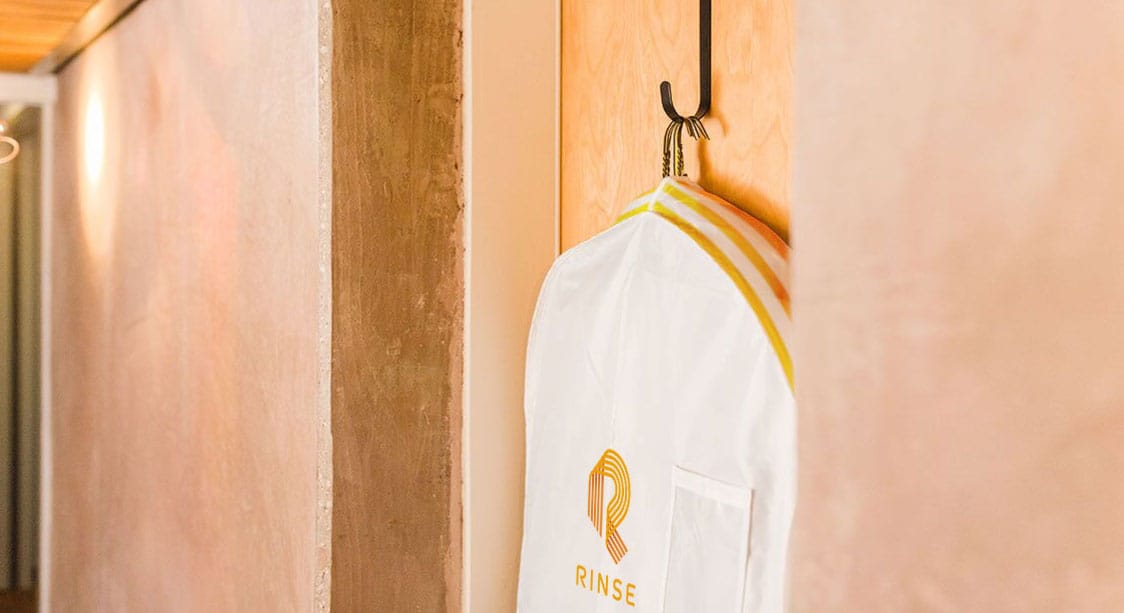
Have laundry or dry cleaning to do?
Rinse picks up, cleans and delivers 7 days a week. Amazingly awesome. Ridiculously simple.

How Often Should You Wash Cotton Clothes?
Determining the appropriate washing frequency for cotton clothes depends on several factors, including how often they are worn, the climate you live in, and your personal preferences. Generally, cotton clothes can be worn multiple times before needing a wash, especially if they are not visibly soiled or odorous. However, more frequent washing might be necessary in hot and humid climates where sweat and dirt accumulate quickly.
It's crucial to check the care labels on each garment to ensure proper washing and maintenance. Care labels provide valuable information on the recommended washing temperature, whether the item can be tumble dried, and any specific instructions to follow. For more insights on understanding clothing labels, check out this guide on clothing labels.
How To Wash Cotton In 5 Steps
Washing cotton clothes effectively involves several key steps. Here’s a detailed guide to help you keep your cotton garments in pristine condition:
-
Pretreat Any Stains: Before washing, inspect your clothes for any stains. Use a stain remover to pretreat areas with visible stains. Gently rub the remover into the fabric and let it sit for a few minutes to break down the stain.
-
Sort by Color: Separate your laundry into whites, darks, and colors. This prevents color bleeding and keeps your whites bright. Sorting also helps in selecting the appropriate wash cycle for different fabric types.
-
Select the Suitable Detergent and Fabric Softener: Choose a mild laundry detergent that is safe for cotton fabric. Avoid using too much detergent, as it can leave residues. You can also add a fabric softener to enhance the softness and scent of your cotton clothes.
-
Choose the Water Temperature: Cotton is generally durable and can withstand a range of temperatures. However, to prevent shrinkage, it’s best to wash cotton clothes in cold or lukewarm water. Hot water can cause cotton to shrink and lose its shape.
-
Use the Right Washing Cycle: Set your washing machine to a gentle or regular cycle, depending on the garment's sturdiness. For delicate cotton items, use a gentle cycle to avoid damage.
For more detailed washing instructions, you can refer to this guide on washing.
Treating Stains On Cotton
Cotton clothes are prone to various stains, but with the right approach, you can keep them looking spotless. Here are some practical tips for treating common stains:
-
Use Stain Removers: Commercial stain removers are highly effective for treating tough stains on cotton fabric. Apply the remover directly to the stain and let it sit for a few minutes before washing.
-
Opt for DIY Solutions: For a natural alternative, create a paste using baking soda and water. Apply it to the stain, let it sit, and then wash as usual. Vinegar and lemon juice can also be effective for certain stains.
-
Avoid Using Undiluted Chlorine Bleach: While bleach can whiten cotton, undiluted chlorine bleach can damage the fibers. Instead, use oxygen bleach, which is gentler on cotton and still effective at removing stains.
For more tips on stain removal, visit our stain treatment guide.
5 Effective Tips For Cotton Wash
Enhance your cotton washing experience with these additional tips:
-
Address the Wrinkles: Cotton is prone to wrinkling. To minimize wrinkles, remove clothes from the washer promptly and either air dry or tumble dry on a low setting. For a wrinkle-free finish, iron your cotton garments while they are still slightly damp.
-
Select Fabric-Friendly Laundry Accessories: Use mesh laundry bags for delicate cotton items to protect them during the wash cycle. These bags prevent snags and stretching, especially for items like cotton sweaters.
-
Try to Wash Cotton Less Frequently: Overwashing can cause cotton to wear out faster. Unless your clothes are visibly dirty or smelly, consider wearing them a few times before washing.
-
Use Gentle Detergents: Opt for mild detergents that do not contain harsh chemicals. Harsh detergents can weaken cotton fibers and cause fading over time.
-
Air Dry Whenever Possible: Air drying is the gentlest method for drying cotton clothes. It helps prevent shrinkage and keeps the fabric in better condition. If you must use a dryer, choose a low heat setting to minimize the risk of shrinkage.
For more laundry tips, check out our laundry guide.
Keep Your Cotton Clothes Safe With Rinse
For those times when you need professional care for your cotton clothes, Rinse is here to help. Rinse offers expert laundry and dry cleaning services that ensure your garments receive the attention they deserve. By entrusting your cotton clothes to Rinse, you can rest assured that they will be cleaned, treated, and maintained with the utmost care, extending their lifespan and keeping them looking their best.
Explore Rinse's services and discover how we can help you maintain the quality and longevity of your cotton garments. Whether it's regular laundry or specialized care, Rinse is committed to providing the best service for your clothing needs.
By following these steps and tips, you can ensure that your cotton clothes remain in excellent condition, providing comfort and style for years to come.
Contact us at Rinse today to see our skill in action.

Have laundry or dry cleaning to do?
Rinse picks up, cleans and delivers 7 days a week. Amazingly awesome. Ridiculously simple.

Introduction
Laundry is a routine task, but it can quickly become a source of frustration when faced with stubborn stains, dingy whites, and lingering odors. Enter borax, a natural compound that can transform your laundry experience. Often referred to as a laundry superhero, borax offers versatile solutions that go beyond traditional laundry detergents. Whether you’re dealing with hard water, tough stains, or just looking to boost your laundry routine, borax might be the game-changer you need.
What Is Borax?
Borax, scientifically known as sodium tetraborate, is a naturally occurring mineral composed of boron, oxygen, sodium, and water. Found in dry lake beds, especially in places like California and Turkey, borax has been used for centuries in cleaning, laundry, and even in personal care products. Its natural chemical composition makes it highly effective in a variety of cleaning applications, from boosting laundry detergent to removing tough stains.
Borax is often confused with other cleaning agents, but it stands out due to its ability to soften water, neutralize odors, and enhance the cleaning power of regular laundry detergents. The combination of these properties makes borax a go-to solution for many households looking to elevate their laundry game.

How Does Borax Work?
The science behind borax’s cleaning power lies in its alkaline nature. With a pH of around 9.5, borax helps to neutralize acidic stains and odors, making them easier to remove. When added to laundry, borax breaks down into borate ions, which act as a laundry booster by enhancing the performance of your detergent. This process not only helps in cleaning clothes but also prevents the buildup of residue in your washing machine.
In addition, borax is highly effective in combating hard water. Hard water contains high levels of minerals like calcium and magnesium, which can interfere with the effectiveness of your laundry detergent. These minerals can leave your clothes feeling stiff, looking dull, and retaining residues. Borax softens hard water by binding with these minerals, allowing your detergent to work more efficiently and ensuring that your clothes come out cleaner, brighter, and softer.

How to Use Borax in Laundry
Borax’s versatility in laundry care is unmatched, and there are several ways you can incorporate it into your routine to maximize its benefits. Here are some practical applications:
Detergent Booster
One of the easiest ways to use borax is as a laundry detergent booster. Adding half a cup of borax to your wash cycle can significantly enhance the cleaning power of your regular detergent. This is especially useful when dealing with heavily soiled items or laundry that requires extra care. The borax helps to break down stains and remove dirt more effectively, leaving your clothes fresher and cleaner. For even more effectiveness, consider adding wash soda to the mix, as it complements borax in lifting stains and enhancing detergent performance.
Stain Remover & Spot Treatment
Borax is a powerful stain remover, capable of tackling even the toughest stains. Whether you’re dealing with wine, blood, or grease, a borax paste can make a big difference. Mix borax with water to create a thick paste, then apply it directly to the stain. Let it sit for about 30 minutes before washing as usual. This treatment helps to break down the stain’s molecules, making them easier to remove in the wash. For additional stain-fighting tips, check out this guide on how to remove old stains and how to remove armpit stains.
For smaller stains, borax can be used as an effective spot treatment. Mix borax with a little water to create a paste, then apply it directly to the stained area. Gently rub it in, let it sit for a few minutes, and then wash as usual. This method works well for a variety of stains, from food spills to grass stains, making it a versatile tool in your stain-fighting arsenal.
Whitener
Borax is also an excellent natural whitener. If you want to brighten your whites without using harsh chemicals like bleach, add half a cup of borax to your white laundry load along with your regular detergent. The borax works to remove dulling residues and stains, giving your whites a crisp, clean appearance. For stubborn stains or particularly dingy clothes, consider a laundry strip treatment that includes borax, wash soda, and detergent to strip away built-up residues.
Laundry Stripping
Laundry stripping is a deep-cleaning method that removes detergent build-up, body oils, and other residues from fabrics, restoring them to their original softness and brightness. To perform laundry stripping with borax, fill a bathtub or large sink with hot water and dissolve a mixture of borax, wash soda, and your regular laundry detergent. Submerge your clothes and let them soak for several hours, stirring occasionally. The borax works to break down the residues that regular washing can leave behind, while the wash soda and detergent lift away dirt and grime. After soaking, run the clothes through a normal wash cycle. This process is especially effective for towels, activewear, and other items that may hold onto odors or feel less absorbent over time.
Odor Remover
Borax not only tackles visible stains but also neutralizes odors. This is particularly beneficial for items like gym clothes, towels, and pet bedding. Soak the odorous items in a solution of borax and water before laundering as usual. The borax will help to break down the odor-causing molecules, leaving your items smelling fresh and clean. For more on odor and stain removal, you can explore this article on hot or cold water for stains.

FAQs
Borax is a versatile and powerful tool for laundry care, but you might have some questions about its safety and usage. Here are some frequently asked questions:
Is Borax Safe?
Yes, borax is safe to use in laundry when handled properly. However, it is important to keep it out of reach of children and pets, as ingestion or excessive skin contact can be harmful. Always follow the recommended usage guidelines and store borax in a cool, dry place. If you’re looking for alternatives, you might consider boric acid, which is chemically similar to borax and also effective in laundry applications.
Is Borax the Same as Baking Soda?
No, borax and baking soda are different compounds with different uses. Borax, or sodium tetraborate, is a borate mineral that is more effective at softening water and removing tough stains. Baking soda, or sodium bicarbonate, is an alkaline salt that is often used for deodorizing and mild cleaning. While both are useful in laundry, borax offers more powerful stain-fighting and water-softening benefits.
Can I Use Borax with Delicates?
Borax can be used with delicate fabrics, but it’s important to use it sparingly and test it on a small, inconspicuous area first. For delicate items, dilute the borax in plenty of water and avoid direct application to prevent any potential damage. When in doubt, consider using professional cleaning services to ensure your delicates are treated with the utmost care. And remember, using a fabric softener with delicate fabrics can help maintain their softness and texture, complementing the cleaning power of borax.

Stain-Free, Stress-Free: Let Rinse Revolutionize Your Laundry
Whether you’re dealing with hard water, stubborn stains, or just want to improve your laundry results, borax is a powerful, natural solution that can make a world of difference. And when you need a little extra help, Rinse is here to ensure your laundry is always in expert hands. Rinse provides top-notch laundry services, ensuring your clothes are meticulously cleaned, stains are expertly removed, and your items are returned fresh and ready to wear. By trusting Rinse, you can enjoy a stain-free, stress-free life, leaving the dirty work to us. Whether you’re dealing with stubborn stains or just need a break from laundry day, discover the convenience of Rinse today.
Contact us at Rinse today to see our skill in action.

Have laundry or dry cleaning to do?
Rinse picks up, cleans and delivers 7 days a week. Amazingly awesome. Ridiculously simple.
Topics
Rinse Drop
We offer pickup and delivery if you can’t be present between 8pm and 10pm.
Our Valet will pick up or deliver your order to your doorstep or concierge, at which point you’ll receive a text with a photo showing where your items were left.
You can enable Rinse Drop on any (or all) of your orders.

